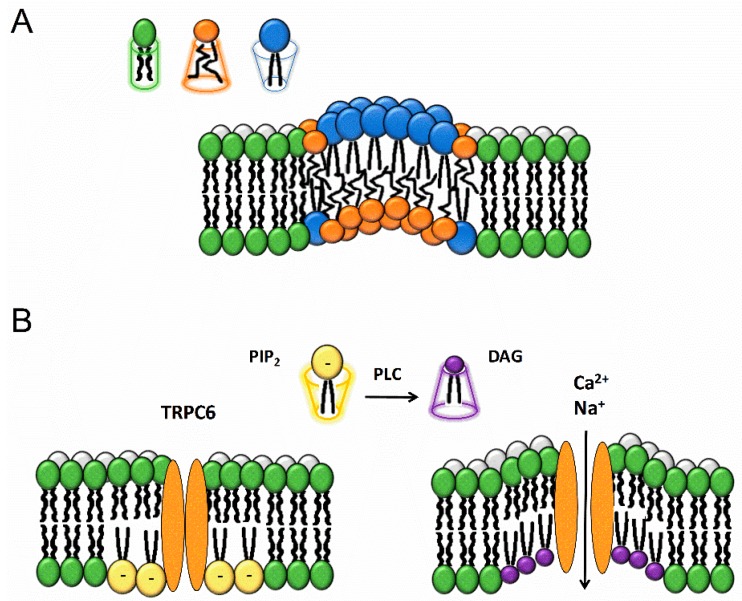Figure 3.
Lipids and membrane bending. (A) The membrane curvature can be altered by inserting lipids with specific shapes into the bilayer. Lipids can have a cylindrical (e.g., dioleoylphosphocholine), conical (e.g., dioleoylphosphotidylethanolamine, DAG and cholesterol) or inverse conical (e.g., lysophosphocholine) geometry [99]. Similar lipids tend to self-assemble in dynamic macrostructures depending on their lipid geometry and thus create asymmetric lipid bilayers. The increase in variability of pressure distribution along the membrane leaflets leads to different monolayer torques. The leaflet with the bigger torque bends to restore the system torque balance. (B) PLC-dependent breakdown of large-head, charged PIP2 to small-head, uncharged DAG occurs predominantly in the inner leaflet of the membrane in the close proximity to TRPC6. This causes inner leaflet deflection inducing changes in the curvature, resulting in bilayer stress and TRPC6 channel opening.

